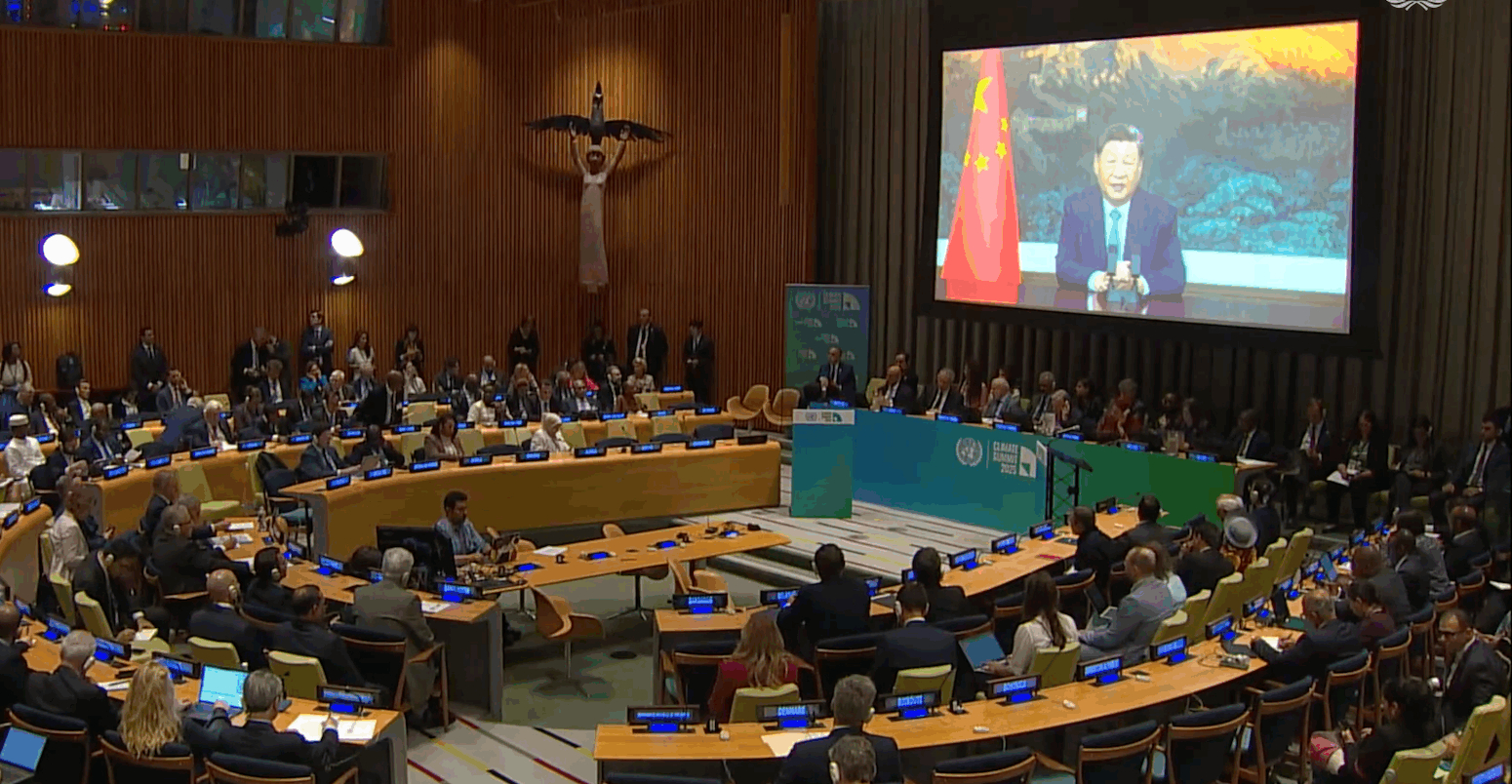Report on Child Fatality in Walhalla, South Carolina: An Analysis of Sustainable Development Goal Failures
Case Summary
- Victim: Isaiah Dionne, age 4.
- Accused: Destiny Shay Dionne (mother) and Joshua Emanuel Lamar Latimer (mother’s husband).
- Charges: Homicide by child abuse and unlawful conduct toward a child.
- Incident Location: Walhalla, South Carolina.
- Key Finding: The victim was found deceased, weighing 21 pounds, with signs of severe malnourishment.
Violations of Sustainable Development Goals (SDGs)
SDG 2: Zero Hunger
This case represents a critical failure to meet the targets of SDG 2, which aims to end hunger and ensure access to safe, nutritious, and sufficient food for all people, particularly the vulnerable.
- Failure to Provide Nutrition: The victim was allegedly starved, leading to a state of severe malnourishment described by first responders as comparable to images of famine. His weight of 21 pounds at age four is a direct indicator of the denial of basic nutrition.
- Food Insecurity and Deprivation: Despite neighbors providing food to the family, evidence suggests the victim was systematically deprived of sustenance, a direct contravention of the goal to end all forms of malnutrition.
SDG 3: Good Health and Well-being
The circumstances surrounding the victim’s death highlight a complete disregard for SDG 3, which seeks to ensure healthy lives and promote well-being for all at all ages.
- Denial of Medical Care: Reports indicate the victim had not received medical attention for two years, a significant lapse in healthcare that violates the principles of ensuring well-being.
- Physical and Psychological Abuse: The victim’s physical condition, with “sunken” eyes and “very visible” ribs, points to extreme physical suffering. Allegations of being forced to sleep on a blanket, locked in a closet, and having his room’s curtains stapled shut constitute severe abuse, undermining his mental and physical well-being.
SDG 16: Peace, Justice and Strong Institutions
This incident is a profound violation of SDG 16, which calls for the promotion of peaceful and inclusive societies and aims to end abuse, exploitation, and all forms of violence against children.
- Violence Against a Child: The alleged actions of the accused constitute an extreme form of violence and abuse against a child, directly opposing the target of SDG 16.2.
- Institutional Failure: The involvement of a South Carolina Highway Patrol trooper as one of the accused represents a failure within an institution designed to protect citizens. This undermines public trust and the integrity of institutions responsible for upholding justice.
- Justice System Response: The subsequent arrest, filing of charges, and denial of bond are actions taken by the justice system to address this violation. The suspects face 20 years to life in prison, reflecting the legal framework in place to prosecute such crimes.
1. Which SDGs are addressed or connected to the issues highlighted in the article?
-
SDG 2: Zero Hunger
- The article’s central theme is the starvation of a 4-year-old boy, which directly relates to the goal of ending hunger and all forms of malnutrition. The description of the child as “severely underweight and malnourished” and weighing only 21 pounds highlights a complete failure to provide basic nutrition.
-
SDG 3: Good Health and Well-being
- The child’s death was a preventable death of a child under 5. The article also mentions he had not seen a doctor for two years, indicating a lack of access to essential healthcare services, which is a key component of this goal. His physical state, described as “skin and bones” with “sunken” eyes, is a clear indicator of extremely poor health.
-
SDG 16: Peace, Justice and Strong Institutions
- This goal is relevant as the case is a severe instance of violence, abuse, and torture against a child. The article details the horrific treatment, including being locked in a closet and forced to drink from a toilet. Furthermore, the legal response, including the arrest and charges of “homicide by child abuse,” relates to the goal’s aim to promote the rule of law and ensure justice.
2. What specific targets under those SDGs can be identified based on the article’s content?
-
SDG 2: Zero Hunger
- Target 2.1: “By 2030, end hunger and ensure access by all people, in particular the poor and the vulnerable, including infants, to safe, nutritious and sufficient food all year round.” The article demonstrates a complete failure to meet this target for the child, who was deliberately starved.
- Target 2.2: “By 2030, end all forms of malnutrition… including achieving… the internationally agreed targets on stunting and wasting in children under 5 years of age…” The boy’s condition, described as “severely underweight and malnourished,” is a clear case of wasting, a form of malnutrition this target aims to eliminate.
-
SDG 3: Good Health and Well-being
- Target 3.2: “By 2030, end preventable deaths of newborns and children under 5 years of age…” The death of the 4-year-old boy from starvation and abuse is a tragic example of a preventable death that this target seeks to end.
-
SDG 16: Peace, Justice and Strong Institutions
- Target 16.1: “Significantly reduce all forms of violence and related death rates everywhere.” The child’s death was a direct result of violence (abuse and neglect), and the parents are facing homicide charges.
- Target 16.2: “End abuse, exploitation, trafficking and all forms of violence against and torture of children.” The article provides a graphic account of child abuse and torture, including starvation, confinement, and inhumane treatment, which this target aims to eradicate.
- Target 16.3: “Promote the rule of law… and ensure equal access to justice for all.” The involvement of law enforcement, the arrest of the parents, and the ongoing legal proceedings (charges of homicide, denial of bond) are actions related to upholding the rule of law and seeking justice for the victim.
3. Are there any indicators mentioned or implied in the article that can be used to measure progress towards the identified targets?
-
Indicators for SDG 2 (Zero Hunger)
- Implied Indicator for Target 2.2 (Prevalence of malnutrition): The article provides qualitative data that points directly to severe malnutrition (wasting). Descriptions like “weighing just 21 pounds,” “ribs were very visible,” and being “basically skin and bones” serve as anecdotal evidence for indicators measuring malnutrition in children under 5.
-
Indicators for SDG 3 (Good Health and Well-being)
- Implied Indicator for Target 3.2 (Under-5 mortality rate): The death of the 4-year-old boy is a specific data point contributing to the under-5 mortality rate. The cause of death, “homicide by child abuse,” highlights a preventable death that is tracked by health and justice systems.
-
Indicators for SDG 16 (Peace, Justice and Strong Institutions)
- Implied Indicator for Target 16.1 (Number of victims of intentional homicide): The child is a victim of an alleged homicide, as indicated by the “homicide by child abuse” charges. This case would be counted in statistics related to this indicator.
- Implied Indicator for Target 16.2 (Proportion of children experiencing physical punishment/psychological aggression): The detailed account of the abuse—starvation, being locked in a closet, forced to sleep on a blanket, and forced to drink from a toilet—serves as a case study for the types of severe violence and torture that this indicator aims to measure.
4. Create a table with three columns titled ‘SDGs, Targets and Indicators” to present the findings from analyzing the article.
| SDGs | Targets | Indicators (Mentioned or Implied) |
|---|---|---|
| SDG 2: Zero Hunger |
|
|
| SDG 3: Good Health and Well-being |
|
|
| SDG 16: Peace, Justice and Strong Institutions |
|
|
Source: themirror.com







